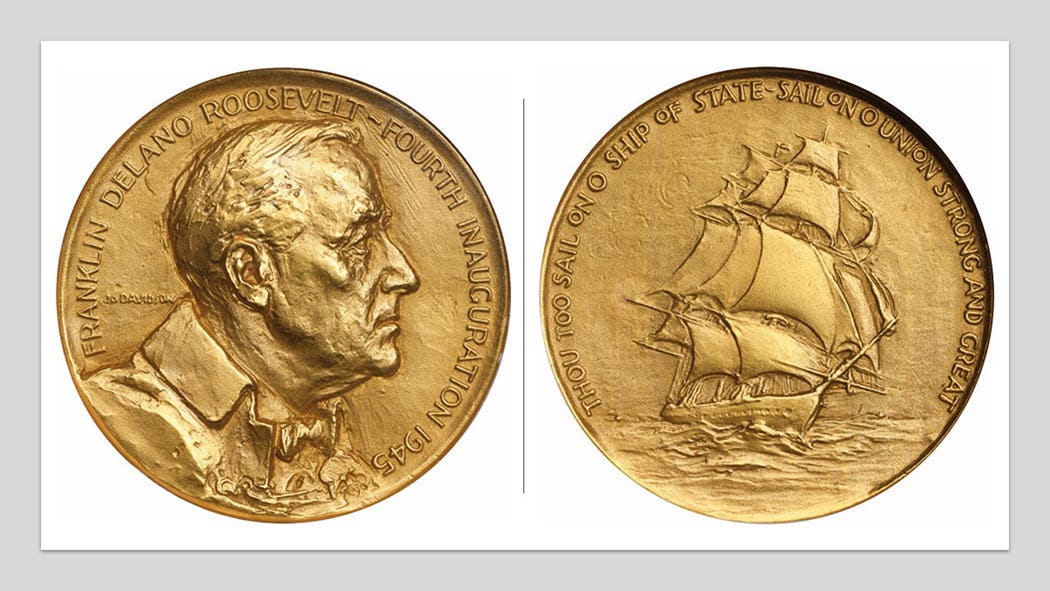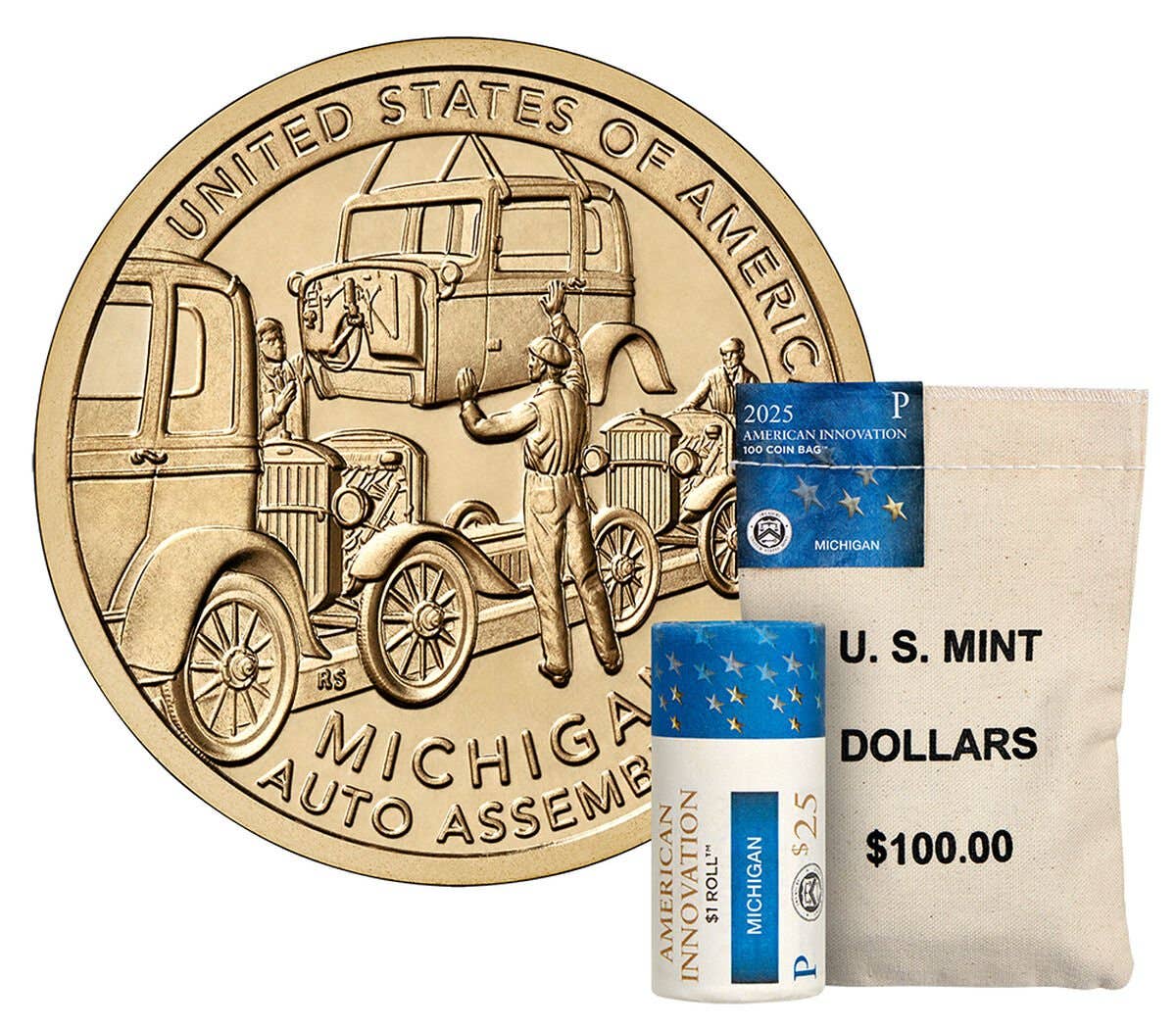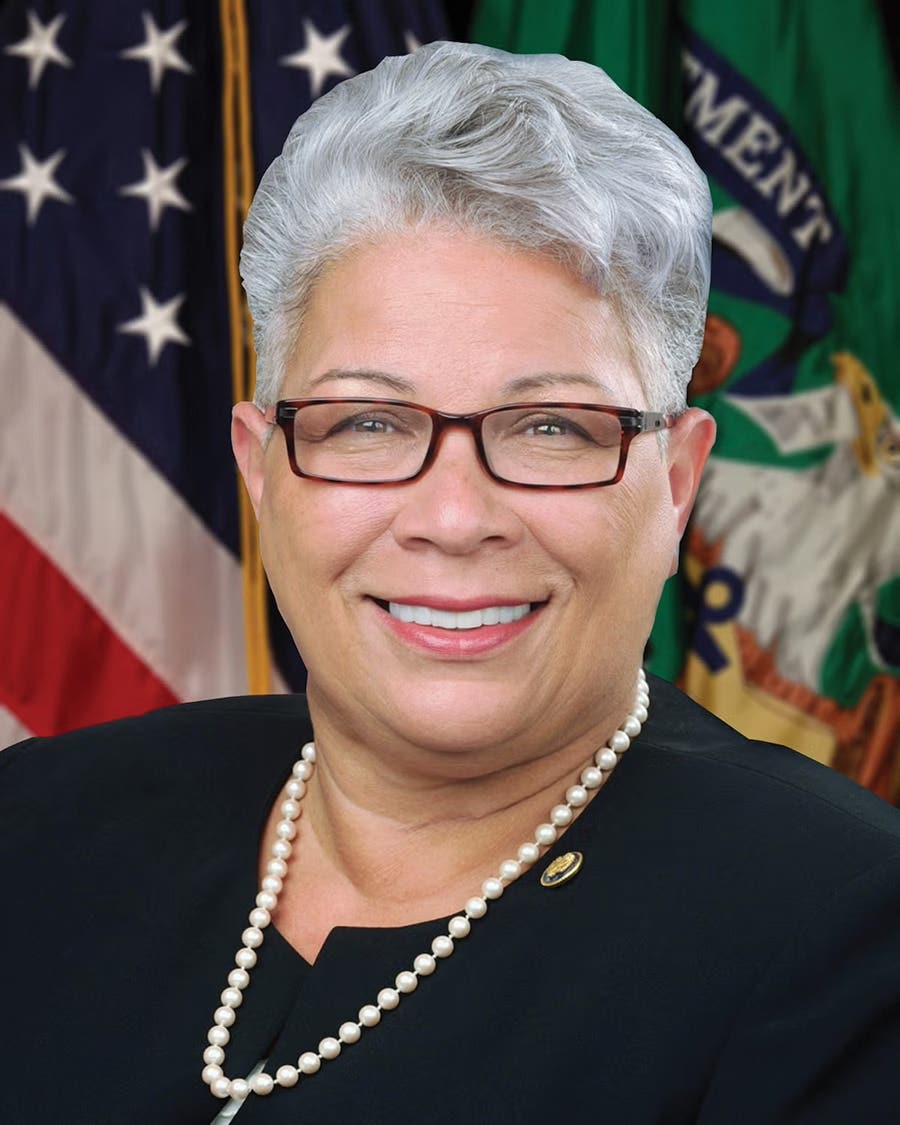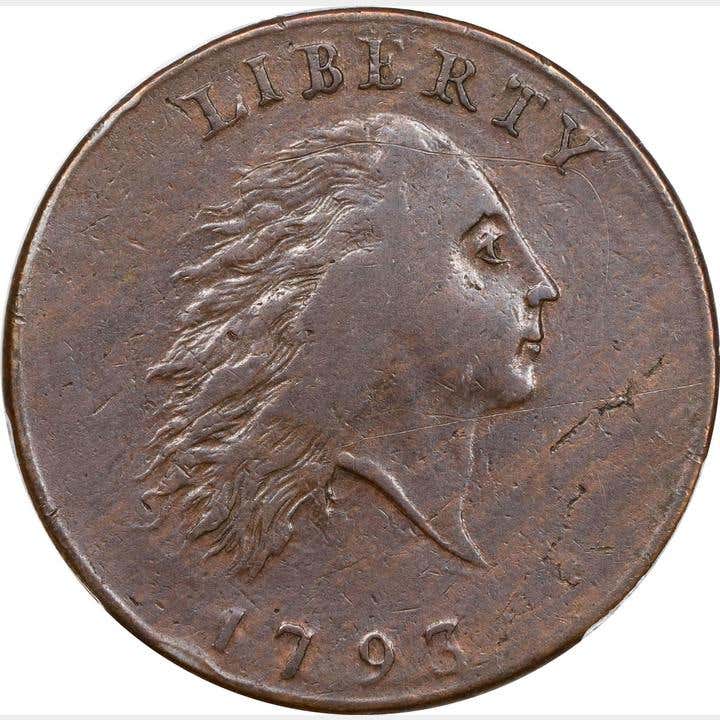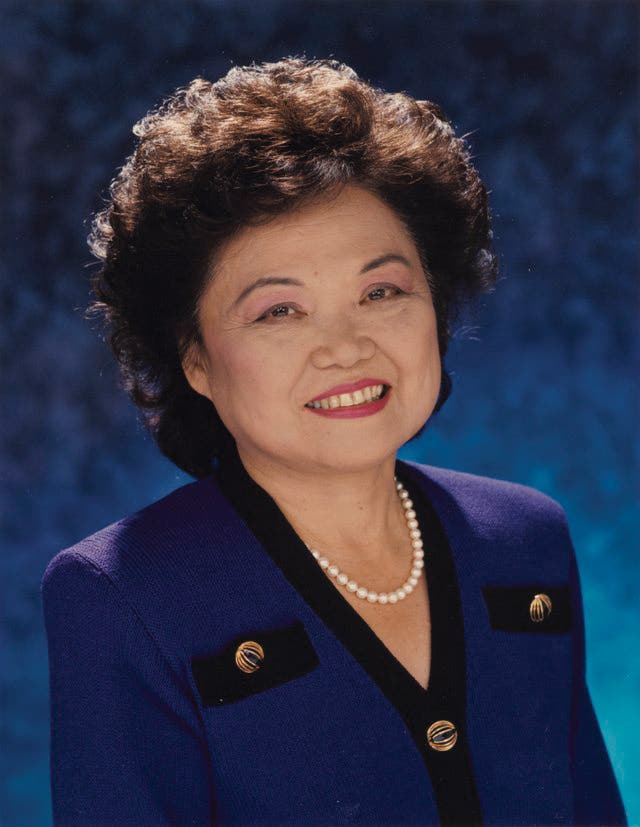The Barber Dime
By the late 1880s, there were increasing calls for the replacement of the Seated Liberty design. The Barber dime was introduced as its replacement.
In the early 1950s, within the memory of many older collectors, well-worn Barber dimes were still being occasionally found in pocket change or by going through rolls of coins obtained at a bank. Familiarity breeds contempt, and there were relatively few serious collectors of such coins in those days. That has now changed to the point that there is strong competition for rare dates, with several books and articles to guide the beginning numismatist.
The story of the Barber dime really begins in the 1870s when silver coins began to enter circulation for the first time since they were hoarded during the American Civil War. After the war ended in 1865, paper money reigned supreme until 1873, when the Treasury was finally able to put small silver back into daily use.
Mint Director Henry R. Linderman, who assumed office in April 1873, was not only an energetic official but one who believed that our coins should get periodic facelifts. By the spring of 1876, he had set his sights on the minor silver coinage but did not trust then-Chief Engraver William Barber to carry out his directions. Barber was known to disregard authority when it suited his purposes. His son Charles, then an assistant engraver at the Mint, had the same general temperament, and this did not endear him to Linderman either.
You may also like: Collecting Barber Dimes
The director turned to his counterpart at the British Royal Mint in London, Charles Fremantle, for a suggestion on a skilled English engraver who might come to America. Fremantle made inquiries and turned up with the name of George Morgan, a young engraver whose medals were well known. Morgan was approached by Linderman and came to terms within a short time. In the fall of 1876, he sailed for Philadelphia.
Morgan did, in fact, work closely with Linderman and, by the summer of 1877, had prepared several fine designs for the silver coins. At the same time, he also worked on new artwork for the gold, Linderman having expanded his horizons. Unfortunately for Linderman, the long-simmering silver problem came to a boil in late 1877, and everything had to be dropped to prepare a design for the new silver dollar. Linderman chose Morgan’s design, which was a combination of motifs found on his silver and gold patterns.
At the same time as the new dollar coin, a sudden influx of silver from abroad, which had been exported during the Civil War to Canada and Latin America, meant that too much minor silver was now in use, and the Treasury ordered a suspension of such coinage in 1878. Design changes for minor silver coins were now a dead issue.
On April 9, 1887, Mint Director James Kimball revived the idea of minor silver coinage redesign and issued a circular inviting artists to submit artwork. He had not, however, taken the trouble to inform the Mint engraving staff of his plans, and they refused to cooperate. The circular was canceled six days later.
You may also like: Item of the Week: 1894-O Barber Dime
Although the project was again stalled, it did set key people thinking about the idea, and this was reinforced when Kimball wrote about the matter in his annual Mint report for 1887. In particular, he stated to the Treasury Secretary that “my official attention has been called by numerous citizens to the inartistic quality of the designs upon several of our current coins.”
Although Director Kimball had failed in his efforts to achieve design changes, the lesson was not lost on Charles Barber, chief engraver since the death of his father, William, in late 1879. In September 1890, Barber wrote Mint Director Edward O. Leech suggesting that new designs be considered. Leech replied that he was in full accord with the idea, but nothing could be done until the spring of 1891 due to other pressing matters.
On April 4, 1891, the director issued a circular to the artists of the United States, inviting them to submit designs for changes in the dime, quarter, half, and silver dollar. The Mint engraving staff again refused to participate in the competition. It was, in fact, a miracle that anybody participated because of mistakes made by Leech in the rules of competition.
The director had set a time limit of June 1, less than two months after the circular was issued. Moreover, each artist had to submit designs in plaster for both sides of the silver dollar. Separate designs were then required for each obverse of the dime, quarter, and half dollar. Apparently, he intended a different obverse for each silver coin but a common reverse. The circular promised a $500 award for each design that was accepted.
The number of models actually submitted is not known, but all were rejected on June 3 by a committee composed of Augustus Saint-Gaudens, Henry Mitchell, and Charles E. Barber. Even Mint Director Leech and Treasury Secretary Fairchild agreed that the models were no improvement over the current designs.
In its report to the Treasury, the committee suggested that “the services of one or more artists distinguished for work in designing for relief be engaged at a suitable compensation to prepare for the consideration of the Department new designs for the coins of the United States.” Director Leech took this as a personal challenge to improve our coinage. On June 11, the director wrote Philadelphia Mint Superintendent Oliver C. Bosbyshell that the Mint engraving staff should prepare designs for subsidiary silver coins; the dollar was no longer under consideration.
Leech spelled out precisely what he wanted in the way of designs. In particular, he ordered the head of Liberty to be based directly on the French head of Liberty appearing on the bronze and silver coins of the Third Republic. He also ordered that the reverse of the quarter and half dollar bear the Great Seal of the United States, an eagle with an olive branch and arrows in its talons. He felt that the reverse of the then-current dime was admirable and ought to be retained, thus perpetuating an illegal reverse first used in 1860. (The law required that “United States of America” appear on the reverse of the dime.)
In his answer to the director, Superintendent Bosbyshell wrote on June 13 suggesting that Leech should visit Philadelphia for a personal consultation. All concerned, especially the engraving department, felt that this would speed matters and result in better work. Director Leech visited the mint in due course, discussed the matter with the staff, and in late July returned to examine designs prepared by Charles Barber, George Morgan, and William Key. At this meeting, Barber was given the nod, and Leech even released the news to the press.
It is not quite clear when Barber’s Liberty head was completed, but it seems to have been done prior to the end of August. At an early date, Leech approved the Liberty head, and most of the ensuing discussions, which had nothing to do with the dime, concerned the various reverse models prepared by Barber incorporating the Great Seal as the central motif. In one case, for example, the director did not like the way in which the scroll, containing the motto, “E PLURIBUS UNUM,” passed over the neck of the eagle.
After a series of criticisms from the director concerning his work to date, Barber replied on Oct. 2. The engraver noted that “I am quite ready and willing to make any change in design, provided the suggestion in my mind is a good one, but I must ask that criticism come to an end before I am too far advanced with the die ...” In a cover letter, Superintendent Bosbyshell unwisely seconded Barber’s ill-considered answer.
When the letters were received in Washington, the director was not amused. His response of October 5 said in part, “I beg to say that the only limit which will be placed on such criticism will be the final adoption of the design. My purpose in the suggestions and criticisms which I have offered is to get as perfect a work as possible … I do not like this spirit which resents criticism and suggestions in regard to the work of the Mints. All criticism and suggestions which are actuated by a kindly spirit and which may have the tendency to beautify our coins, instead of being resented … should be most cheerfully received and due consideration given to their merits.”
After the blunt message from the director, Barber made the proper amends and did precisely as he was told. By Nov. 4, all of the patterns, which were half dollars because the quarter dollar reverse would be virtually the same, and the dime reverse was not to be changed from its 1891 appearance.
As the choice of design would be of national significance, the Treasury deferred to President Benjamin Harrison, who in turn presented the patterns to his full cabinet on Nov. 5, 1891. After a lively discussion, the cabinet picked the devices preferred by Director Leech.
Once the decision was made, it was transmitted to the Philadelphia Mint for the preparation of working dies. Coinage was scheduled to begin on the first business day of 1892. Oddly enough, in a comment that will certainly appeal to modern collectors, President Harrison noted that the word “LIBERTY” on the obverse cap ought to be strengthened so that it could be seen more easily and would not wear down in daily use. How right he was!
Once these instructions were received, the engraving staff began preparing the necessary working dies for the branch mints in San Francisco and New Orleans, as well as for the parent mint. None was made for Carson City, which was to close its doors in 1893 and had not made any dimes since 1878.
Bosbyshell asked Leech on Dec. 11 to delay the introduction of the Barber design for all denominations until the dies had been properly tested. The superintendent said that this was necessary because only a trial coinage would tell if the dies had been properly prepared. On Dec. 14, the request was rejected by Leech, who ordered the coinage to proceed as planned.
Barber coinage began at the Philadelphia Mint at 9 a.m. on Saturday, Jan. 2, 1892. According to the superintendent, the dies for all three denominations were in use all day without problems. Dime coinage was relatively heavy at all three mints in that year (New Orleans had resumed such coinage in 1891), with only San Francisco falling below the magic number of 1 million.
Dimes of 1892 are easily obtained by the collector, despite the lower mintage in San Francisco. The first year of coinage of any new design is always saved by the public; they are usually available for a reasonable price. In XF-40, for example, the “P,” “O,” and “S” pieces are worth, respectively, roughly $30, $150, and $300. Type collectors, of course, seek out the Philadelphia issue.
Walter Breen discovered an overdate in the Barber dime series in the early 1960s, 1893/2 Philadelphia. This is not universally accepted and is likely not the case.
One of the more famous Barber coins of this era is the dime struck at San Francisco in 1894. According to official records, only 24 pieces were made. The San Francisco coiner certified that one obverse and one reverse had been used to strike the 24 dimes. The obverses were all defaced, and nine of the reverses were saved at Philadelphia for re-use after they had been returned to the parent mint for examination. (At one time, it was thought that two obverse dies had been used, but this seems not to be true.)
The 1894-S dime, because of its rarity, has been the subject of speculation for over a hundred years. One of the more interesting stories has the daughter of San Francisco Mint Superintendent John Daggett spending one or more of these coins for ice cream.
Most collectors attempting complete sets (with the obvious exception of the 1894-S) usually try for high-quality pieces. For some of the dates in the 1890s, strictly uncirculated Barber dimes can be obtained for little more than $100, though there are quite a few dates and mints that bring much higher prices. The most notable of the regular issues in this respect is the 1895-O, which is worth about $6,000 in MS-60, an amount not for the faint of heart.
(In 1954, four years after he began collecting, the writer was given an old dime bank by an elderly neighbor, in which the last coin had been deposited before 1918. One of the 1895-O dimes was there in Extremely Fine condition!)
Some of the S-mint coins of the early 1900s have low mintages and are strongly sought by collectors. However, none of these is overly rare, and perhaps “scarce” is a better term. The 1901, 1903, and 1904 coins from this mint do bring strong prices, however, as there is heavy competition for high-grade specimens.
The years 1906 through 1909 are special in the dime series as four mints (Philadelphia, New Orleans, Denver, and San Francisco) were striking this coin at the same time, and many collectors assemble year sets. The easiest date for a set of this kind is probably 1908, as uncirculated prices are generally better than for the other three years.
After 1909 and the closure of the New Orleans Mint, the improved American economy and rising wages meant that more silver coins would be needed. The Barber dime was no exception, and most mintages were in excess of 10 million. The 1913-S, with 510,000 pieces, is one of the major exceptions, however, and is on the want list of many collectors.
The year 1916 would almost certainly have seen the largest Barber dime coinage (nearly 50 million) except for the change of design. The 25-year requirement for change had been reached, and the Treasury chose the Mercury design by A.A. Weinman.




